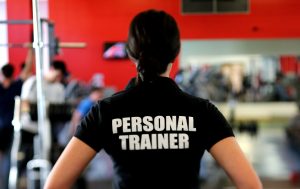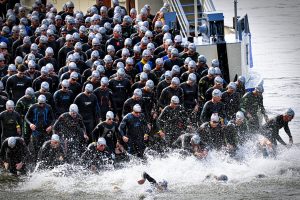Mastering Triathlon Swimming: Technique, Strategy, and Practical Tips
Swimming is often the most daunting aspect of triathlon for newcomers and experienced athletes alike. The open water environment, the mass start, and the technical aspects of breathing, sighting, and pacing make the swim unique and challenging. This post provides a comprehensive guide to triathlon swimming, covering open water techniques, race strategies, equipment, and training tips to help you start your race strong and transition smoothly into T1.
1. Open Water Technique and Breathing
Open water swimming requires a slightly different approach than pool swimming. The dynamic, sometimes unpredictable environment of open water makes efficient technique and breathing especially important.
Body Position: Keep your body as horizontal as possible, with a strong core and a relaxed head position. This streamlined position reduces drag and conserves energy.
Breathing Technique: Breathing should be rhythmic and relaxed. Breathe every 2-3 strokes on alternate sides (bilateral breathing) to stay balanced and adaptable to changes in direction or waves. Practice breathing on both sides in training, as this can help you avoid waves or splashes on race day.
Relaxation and Rhythm: Open water can feel intimidating, but staying calm is crucial. Focus on long, smooth strokes and a steady breathing pattern to keep your heart rate down. Practicing meditation or visualisation before races can help you stay relaxed.
2. Mass Start Tips and Seeding Yourself in the Right Wave
The mass start is one of the most chaotic parts of a triathlon. Swimmers are clustered tightly together, with arms and legs moving in all directions. Here’s how to handle it:
Seeding Yourself Correctly: Many races now have “self-seeded” waves based on anticipated swim time. Choose a position that matches your skill level. Faster swimmers should seed themselves toward the front, while beginners are often more comfortable toward the back or sides. This ensures you’re with others of similar ability which will aid with drafting and help to avoid too much contact.
Starting Strategy: If you’re not comfortable with the crowd, start slightly to the outside to avoid the central chaos. Take turns a little wider to avoid the crush. You may swim a bit further, but you’ll likely have a smoother start and swim. Alternatively, let the main group start and then find open water before settling into your pace.
Stay Calm in Contact: In a mass start, contact is inevitable. If you feel someone bump into you, avoid panicking. Focus on maintaining your form and keep breathing. If you need a break, switch to a stroke like breaststroke or backstroke until you regain your rhythm.
3. Sighting for Efficient Navigation
Sighting is essential in open water to stay on course and avoid swimming extra distance. Unlike in a pool, there are no lane lines in open water, so you’ll need to lift your head occasionally to check your direction.
How to Sight: Every 6-8 strokes, lift your head slightly above the water and look forward toward your target (buoy or landmark). Quickly return to a regular swimming position to avoid losing rhythm or momentum.
Practice in Training: Incorporate sighting drills during pool training. Lift your head for sighting as you swim and practice keeping your hips and legs high to avoid sinking.
Avoid Zig-Zagging: Swimming in a straight line is challenging in open water. To avoid veering off course, pick a landmark beyond the next buoy (like a tree or building) and sight to that as you swim.
4. Drafting for Efficiency
Drafting in open water swimming is a technique where you swim closely behind or alongside another swimmer to reduce drag, conserving energy.
Behind Drafting: Position yourself directly behind another swimmer, keeping 12-24 inches of distance. This position allows you to “ride the wave” created by their strokes, making swimming easier.
Side-by-Side Drafting: Position yourself slightly behind and to the side of another swimmer. This can be helpful when swimming in turbulent water or in a large group, as it provides more room while still reducing drag.
Practicing Drafting: Practice drafting in training with a partner to get comfortable with close contact and managing pace changes.
5. Differences in River, Lake, and Sea Swims
Each type of water has unique characteristics that affect your swim strategy. Pay close attention to your race briefing where there’ll inevitably be information about water conditions. Here’s how to adapt to different open water environments.
River Swims:
- Current Awareness: Rivers often have currents that can either assist or hinder your swim. Understand the current direction and use it to your advantage.
- Navigating Bends: In a river with turns, follow the shortest path by staying close to the inside of each bend. However, avoid shallow areas where the current may slow.
Lake Swims:
- Calmer Conditions: Lakes are typically calm, with little to no current, making them ideal for beginners. However, they can still have surface chop due to wind.
- Temperature Considerations: Lake temperatures vary greatly, so be prepared for both warm and cold conditions. Check the lake’s temperature before race day to adjust your wetsuit choice.
Sea Swims:
- Waves and Swells: Ocean swims can be challenging due to waves, tides, and swells. Practice timing your breathing to avoid swallowing water in waves and sighting over swells.
- Saltwater Buoyancy: Saltwater provides more buoyancy, which can be beneficial for staying afloat. Adjust your body position to avoid sinking hips.
- Currents and Tides: Research the tide schedule for your race. Swimming with the tide can help your speed, while going against it can require more effort.
6. Wetsuit Tips: Purchase, Fit, and Management
A well-fitting wetsuit improves buoyancy, conserves body heat, and reduces drag, all of which can boost your swim performance.
Choosing a Wetsuit: Look for a wetsuit designed specifically for triathlons, with flexibility in the shoulders and a snug fit. The suit should be tight but not restrictive, allowing for free shoulder movement.
Putting On a Wetsuit: To avoid tears and frustration:
- Using plastic bags over your feet can help slide the suit on.
- Pull the suit up inch by inch, focusing on positioning it snugly around your torso and shoulders.
- Use body glide or a similar product around your neck, wrists, and ankles to prevent chafing.
Taking Off a Wetsuit: Practice removing your wetsuit quickly in training. During T1, pull the suit down to your waist as soon as you exit the water. Then, step on the wetsuit’s legs to slide it off completely.
Tip: Placing your timing chip under the wetsuit leg (if full length) can prevent it from catching on the wetsuit or coming off during the swim. The timing mats will still read it in this position.
7. Water Temperature and Guidelines
Water temperature can significantly impact your swim. Cold water can shock the system, while warm water can lead to overheating.
Cold Water: For water below 16°C (60°F), consider wearing a wetsuit and possibly a neoprene cap. Cold water can cause “cold water shock,” so practice in colder conditions if your race water will be cold.
Warm Water: In water above 22°C (72°F), wetsuits may be prohibited for safety reasons. Stay hydrated and pace yourself to avoid overheating.
In triathlon races, wetsuits are typically mandated below 16°C and prohibited above 24°C. There are some nuances around this. Pay attention to the race guidance and briefing for details.
8. Pool Training Tips for Endurance and Technique
Pool training is essential for building endurance, practicing technique, and refining breathing skills. Incorporate drills that simulate open water conditions.
Endurance Training: Swim longer sets (e.g., 400-1500 meters) at a moderate pace to build aerobic capacity. Include intervals (e.g., 10x100m with 10-15 seconds rest) to increase endurance and prepare for race-day exertion.
Technique Drills:
- Catch-Up Drill: Helps improve timing and streamline your strokes.
- Fingertip Drag Drill: Improves arm movement and shoulder rotation.
- Sighting Drill: Practice lifting your head to sight mid-stroke without disrupting rhythm.
9. Goggle Selection and Considerations
Choosing the right goggles is essential for comfort, visibility, and performance.
Lens Color: Use tinted or mirrored lenses for sunny conditions or clear lenses for low-light conditions, such as early morning swims or cloudy days.
Anti-Fogging: Apply anti-fog spray or rinse your goggles with soapy water to prevent fogging during your swim.
Fit: Ensure a snug but comfortable fit. Test them in the pool to confirm that they won’t leak or slip during the race.
10. Entering the Water and Exiting to T1
Smoothly entering the water and exiting efficiently to T1 can save time and energy.
Entering the Water:
- Wading Entry: Run into the water until it’s deep enough to start swimming, usually just above knee level. Although raising the heart-rate too high can affect breathing.
- Dolphin Dives: For shallow water, dolphin dives allow you to cover distance more efficiently. Push off the bottom, glide, and repeat.
Exiting the Water:
- Spot the Exit Early: Begin sighting for the exit in the final 100 meters to align yourself.
- Stand-Up Transition: As you approach the exit, start to swim in shallow strokes, then stand up and walk out.
- Wetsuit Removal: Pull your wetsuit down to your waist as you run to T1. Practice this move in training to make it second nature.
Embrace the Water: Start Your Swim Strong
The swim is your first challenge on race day, and approaching it with confidence and skill sets the tone for the entire race. With the right preparation, gear, and mental focus, you’ll be ready to navigate open water, handle the mass start, and glide smoothly into T1. At TriReady, we’re here to support your journey with resources, guidance, and insights that will fuel your triathlon success. Embrace the water, practice often, and enjoy the journey to becoming a stronger, more confident swimmer!



